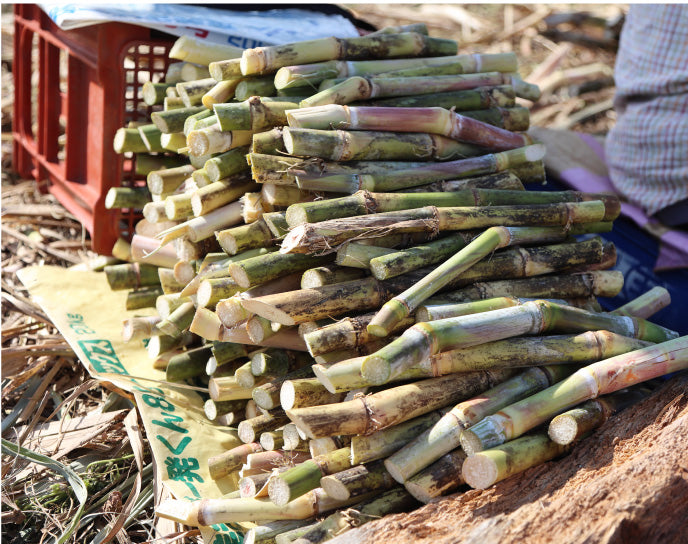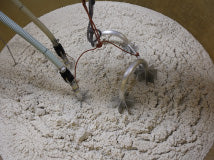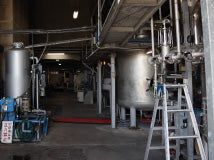The Blessings of the Island Created by the Sun, the Soil, the Rain, and the People.
Black Diamond Shining in Kikai IslandBROWN SUGAR
To make Asahi Shuzo's kokuto shochu even more delicious and reliable, we started sugarcane cultivation using organic farming methods in 1999.
Taking care of the fields, planting, harvesting, and all the other processes require both time and effort when done by ourselves. However, it is this dedication that allows us to proudly say that our kokuto shochu is 'safe, secure, and of top quality.'
The brown sugar produced from organically JAS-certified sugarcane is rare and like a black diamond. While not all shochu is made from this ingredient yet, our ultimate goal is to produce all our shochu using brown sugar sourced from Kikai Island. We will continue to cultivate sugarcane unique to Kikai Island and to Asahi Shuzo.

Rice Cultivation Entrusted with the Wish for 'All Sourced from Kikai Island'UPLAND RICE
From the desire for 'all ingredients sourced from Kikai Island' in our shochu, we began cultivating rice in 2010.
However, there was a significant challenge in rice cultivation on Kikai Island. Kikai Island, formed by raised coral reefs, has excellent drainage, making it unsuitable for rice paddies. Therefore, we chose upland rice cultivation, which is a method of growing rice in fields that suits the local climate of Kikai Island.
Upland rice cultivation is not very common in Japan. We observe the condition of the fields and the rice plants daily, and conduct research by tasting the harvested rice, trying it as a raw material for shochu, and so on. The time and effort invested in research are condensed into our kokuto shochu, which we deliver to you.
Although the cultivation quantity is still small, we started using a portion of our rice in shochu production in 2017.

Fragrant White Sesame Nurtured by CoralWHITE SESAME
Following sugarcane and rice cultivation, we started white sesame cultivation in 2013.
While 99% of sesame distributed in Japan comes from overseas, Kikai Island is known as the top producer of white sesame in Japan. The fragrant white sesame is nurtured by the coral reefs that create and continue to rise within Kikai Island. The minerals in the soil and the warm climate cultivate a subtly sweet and gentle aroma.
Asahi Shuzo's white sesame, certified organic by JAS, is extremely rare and exceptionally delicious. With each seed resembling a piece of white diamond, you can surely sense the essence of Kikai Island.








